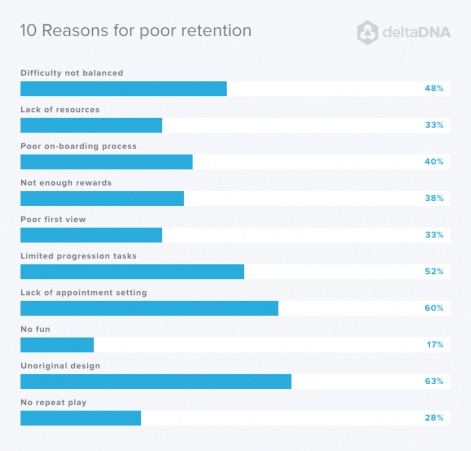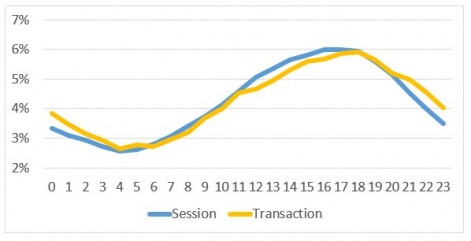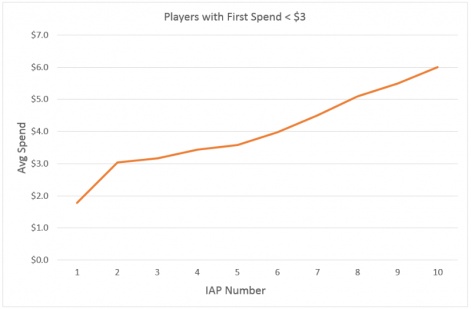Mobile game marketing can be tough. Not only do you have to worry about getting enough people to download your game, often you are responsible for making sure they spend money in the game too.
The mobile game space is constantly evolving and this means your strategy needs to be dynamic if you’re going to meet your key performance indicators.
Some of the most commonly made mistakes in mobile game marketing stem from taking a blanket approach to monetisation and messaging. And these mistakes can often have a large financial impact.
If you want to stay ahead of the pack, check out these seven mobile in-game marketing mistakes and make sure you’re not making them.
1. Broadcasting in-game offers to everyone
If you want to get your players to make an in-app purchase, you need to tell them about it, but sending out a message to every one of your players is a big ‘no-no’.
It may give you a bump in revenue, but what are the consequences down the line? Inevitably, some of your players will be put off, especially if they feel that your offer is not relevant.
You need to consider different types of players in your game and what offers will appeal to them. Novice players, for example, may be more likely to buy boosters or extra lives, while expert players prefer to skip past easier levels to get to more challenging gameplay.
It’s way more effective to segment your players and create targeted messages.

2. Not timing your offers to suit the gameplay
Imagine you have a campaign that’s due to run, and you’re going to start it next week, but which point in the gameplay do you choose?
If you don’t think carefully about where you introduce the offer, you could be wasting your time, or worse still, turning players off the game.
The most effective offers are made in the greatest moment of need
Players will be more susceptible to in-app purchases at pinch-points, such as when they have lost a mission.
If you don’t reward players with gifts that make them feel successful, you’re missing out on a big opportunity to improve retention.
But these points will differ for each segment you’re targeting. Let’s say you’re making an offer to social players. They might be more inclined to buy vanity items, like custom avatars, once they have connected with a certain number of their friends in the game.
Understanding and acting upon the data generated by your players is the key to making sure your offers are timed effectively.
3. Not timing your offers to suit your players
The last thing you should be doing is interrupting the player’s experience at the wrong time of day.
Thankfully, monitoring player data can tell you a lot more than just how they are responding to the gameplay.
Use data to find out what time of day and which days of the week your players are most likely to buy, and when they are most likely to leave.
There are huge fluctuations over the course of a week, e.g. we’ve found that players spend more at night, and remember to look for differences across player segments.

Knowing what time during the day players are susceptible to messaging will help you to make effective choices when it comes to timing and content.
4. Not giving enough early on
40% of players leave after their first session, so it’s essential that you give them reason to come back. While it’s up to the game designers to show off the best of what the gameplay has to offer, marketing messages can also play a role in keeping new players.
If you don’t reward your players with gifts that make them feel successful, you’re missing out on a big opportunity to improve retention.
Understanding and acting upon the data generated by your players is the key to making sure your offers are timed effectively.
Use daily and weekly rewarding to give your players a reason to return to the game, and make sure it’s clearly signposted.
The longer you retain your players, the more valuable they will become.
5. Asking for too much, too soon
It can be tempting to try to monetise all new players via in-app purchase offers when Day 1 Retention rates are low. This is a bad idea.
Pushing for payments too early in the game is guaranteed to make players leave, so you need to give them a chance to get to grips with the gameplay, start enjoying it and feel successful.
Our research has found that players who pay later on in the game, pay more over their lifetime. And what’s more, players who make multiple payments are worth more than those who make only one-off payments.
It really does pay to be patient.

6. Giving too much away
Think about it: the biggest competition for in-app purchase offers in your game is the free gameplay, and the danger that players only return to farm the daily play rewards.
A good way to tell if the free elements in your game are overshadowing your in-app purchase offers, is to analyse your loyal-non spenders. Look at their player data to determine if the game is too rewarding or if offers aren’t being clearly communicated. If it’s too rewarding, you need to change the game.
While it’s satisfying to have a fantastic game, with high retention rates, don’t forget your profit margin.
7. Not A/B testing
With so many variables to consider in marketing, it would be crazy to presume you’ll get it right first time every time.
Let’s say you plan to make a gift to players, but they’re on the brink of spending. You can use A/B testing to try notifying players of the gift at different times and find out which works best. Perhaps you should hold off until later in the game.
While it’s satisfying to have a fantastic game, with high retention rates, don’t forget your profit margin.
Make sure when you’re using A/B testing that you’re only changing one variable, otherwise you can’t guarantee which element is affecting the results. You can read our top tips on A/B testing to help get it right.
When you’re sending out messaging, A/B testing is the essential tool for optimising your results.
Avoiding in-game marketing mistakes
It’s inescapable that you will make some mistakes with your in-game marketing. Not getting it right first time is OK – it’s important to take some risks and try new things.
But the market is tough, and you need to focus on profits as well as pleasing players. You’ll be called upon to justify your marketing decisions and prove their effectiveness.
In the mobile games industry, we’re fortunate that we have an abundance of data to help us out with this. And there’s no point in making mistakes you can avoid.
Harness it in your game now, to ensure your marketing strategy makes money and you don’t make costly mistakes.





















